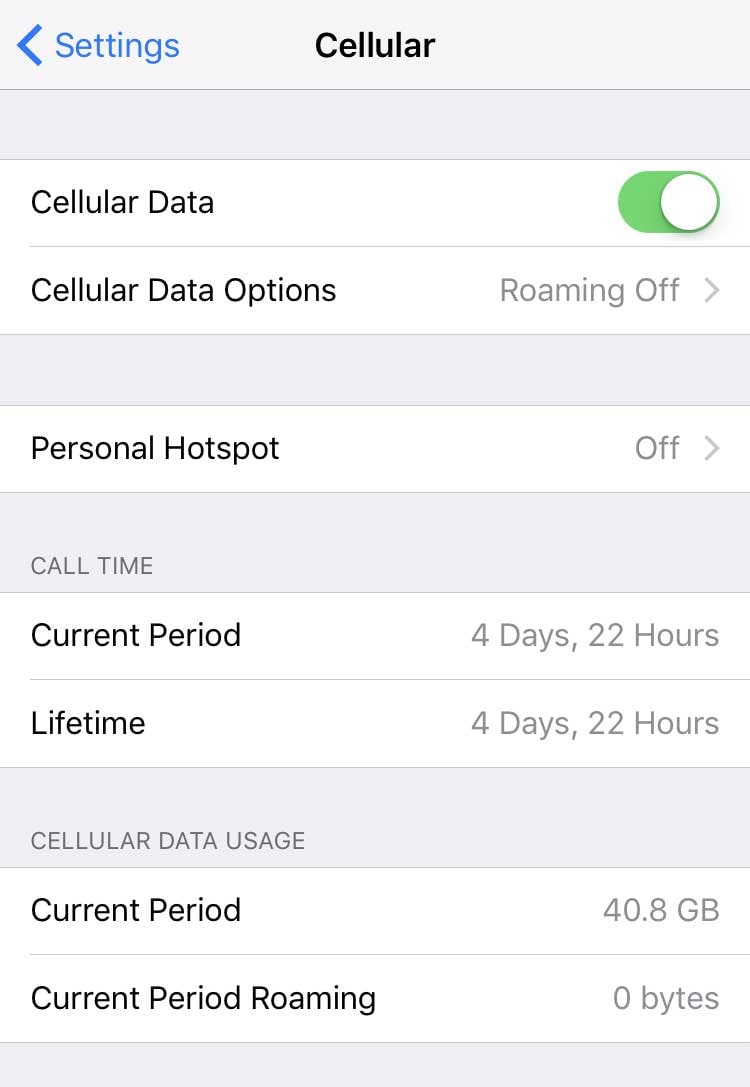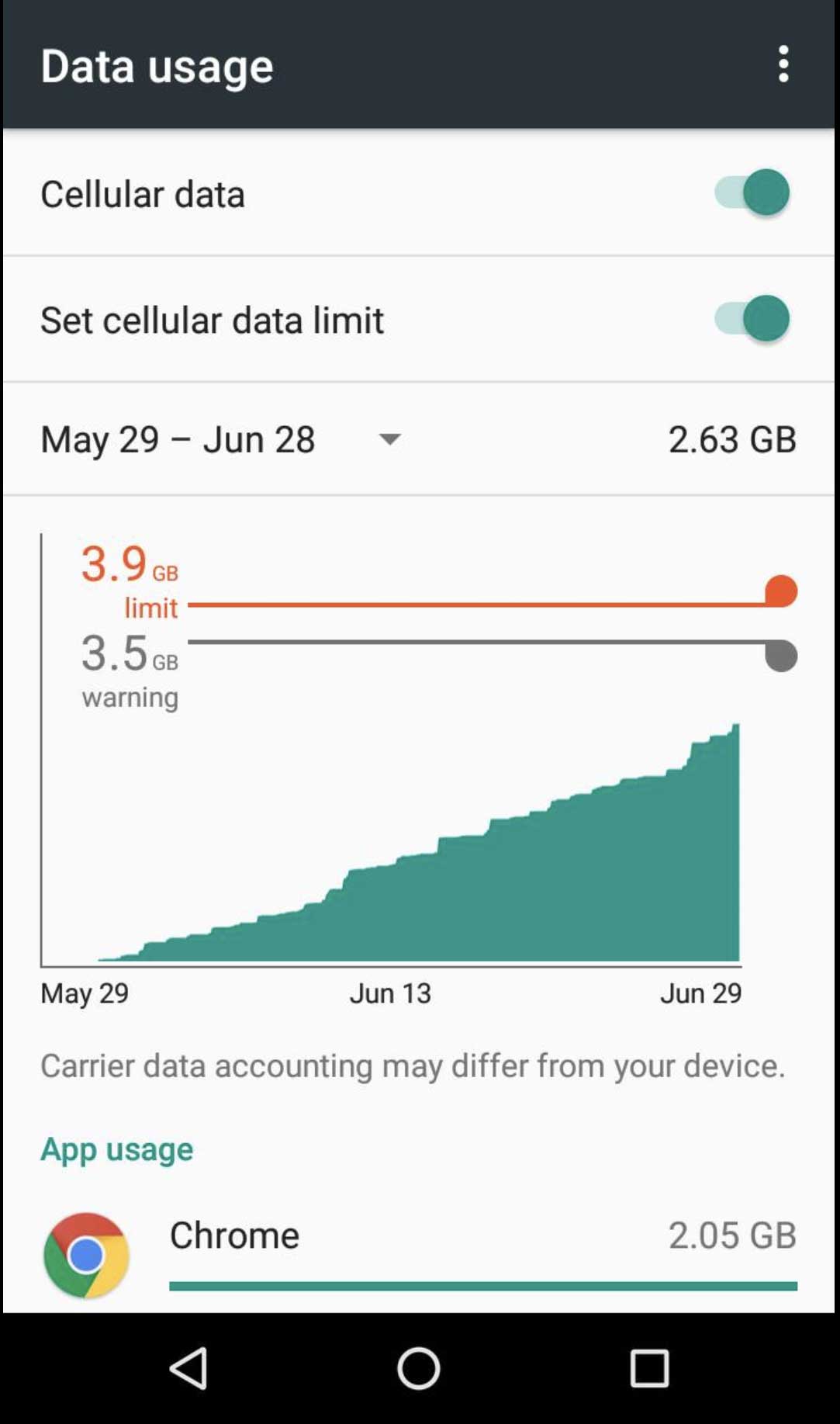If you're not on an unlimited data plan, your smartphone is on a diet of sorts: It can only eat up so much data per month without tipping the scales into overage charges. Whether you're allotted 1Gb, 5Gb or 20Gb per month, it's a good idea to keep an eye on your data usage to avoid surprises at the end of the month and to make sure you have the plan that's right for you.
If you find yourself consistently over your limit, it might be cost-efficient for you to switch to an unlimited plan. Before you do, learn how to check your data usage for the current billing period and determine how much data you use (and need).
Learn more about how you can save with Xfinity Mobile's data plan options
How to Track iPhone Data Usage
To figure out the best plan, you first need to answer the question, "How much data do I use?" If you have an Apple iPhone, you can check how much data you've used directly from the Settings application. Just launch the app and choose "Cellular" near the top of the main screen. It shows the cellular data usage and call time. Don't panic if the numbers are huge: If you don't manually reset these numbers each billing period, they accumulate over a period of many months. Just swipe down to the very bottom of the Cellular screen and tap on "Reset Statistics" to start the tracking from scratch.

Given that Cellular stats have to be manually reset each cycle, how do you figure out your data usage for the current period? One simple solution is the Xfinity app: It allows you to easily monitor your data use.
How to Track Android Data Usage
Android smartphones are, well, smart. The phone automatically knows your billing cycle, so its cellular data usage is in sync with your billing. Go into Settings > Data Usage, and it shows you exactly how you're doing in the current billing period.

Depending on your version of Android, you may also see a graph that offers insight into which days are the most data-intensive, a bar at the usage warning level (3.5Gb in the example) and a bar at the total data usage limit. Why is the example limit set to 3.9Gb? Because you can set limits that work best for your individual usage patterns, and it helps ensure against surprise overages. In this instance, the Android phone's data plan allows 4Gb/month, so having the limit set just below that helps ensure the limit is not surpassed.
Note also that the Android system lets you specify a cellular data limit cutoff; enable that feature, and when you do hit your pre-set monthly data limit, the phone will stop using cellular data to avoid overage charges. Now that's a smart phone.
How to Use Data to Choose Your Plan
Now that you know how much data you use, the second question to ask is, "How much data do I need?" In fact, you may be using more data than you actually need. Take a look at ways to minimize your data usage, without limiting the use of your phone.
Then, spend a few days using your phone as if you have an unlimited plan. Use the tools outlined here to figure out how much data you used. If it's 1.5Gb in 24 hours, you can do the math: 1.5 * 30 days = 45Gb/month. This usage rate may justify going for an unlimited data plan. If you find that you're using just 1 or 2G each week, however, a measured plan is going to be your budget-friendly option.
After determining the amount of data you really need to get the most out of your smartphone, it's time to assess your plan options. If you find that data limits are cramping your style and that you're skipping the apps you enjoy because you're worried about data usage, reconsider your data plan. Xfinity Mobile offers affordable plans that allow you to:
- Pay only for the gigabytes of data that you use
- Use unlimited data
- Mix-and-match data plans on family accounts
- Switch month to month
If you've been living with a phone on a strict diet, weigh your options for a better plan.
Click here to find the Xfinity Mobile plan that's right for you.




